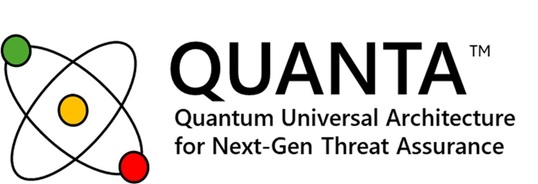The QUANTA framework is a modular and scalable control framework designed to help organisations prepare for, defend against and transition through the emerging threats posed by quantum computing. It recognises that the rise of quantum computing presents a critical risk to widely deployed cryptographic systems and responds with a practical, actionable set of controls built around international best practices.
The framework is developed to bridge the gap between lightweight assurance schemes like Cyber Essentials and comprehensive security standards such as ISO/IEC 27001 and NIST CSF. QUANTA offers a structured, modular control architecture that enables public and private sector bodies alike to tailor their post-quantum strategies in a phased and resource-sensitive manner. The core focus is on enabling quantum resilience across eight functional domains, with 40 discrete security controls that map directly to NIST CSF 2.0, CIS Controls v8 and ISO/IEC 27001:2022.
Each control in the QUANTA framework is designed for either standalone implementation or combined deployment across layered security models, described internally as a 'Lego Security' approach. This modular design ensures that both large-scale enterprises and smaller public sector bodies can adopt quantum-resilient measures according to their level of maturity and sectoral constraints.
The eight domains covered by QUANTA include Cryptographic Resilience, Governance and Risk, Security Architecture and Design, Monitoring and Assurance, Training and Awareness, Supply Chain Dependencies, Data Protection and Confidentiality, and Framework Alignment. Each domain addresses key aspects of the cybersecurity lifecycle and anticipates long-term strategic requirements for resisting quantum-era adversaries.
The framework particularly addresses the threats posed by Shor’s algorithm, which undermines RSA and ECC and Grover’s algorithm, which weakens symmetric encryption and hash functions. By anticipating and mitigating these threats through policy, architecture, and training, QUANTA seeks to enable a smooth and strategic transition to post-quantum cryptographic readiness.
QUANTA is designed to evolve. It supports early-stage awareness activities, hybrid cryptographic deployment using NIST PQC finalists (such as Kyber, SLH-DSA, and ML-DSA), and full migration planning to long-term quantum-resistant environments. It encourages adoption of open standards like the Open Quantum Safe project and promotes the use of flexible, outcome-driven controls suitable for audit, compliance and national regulatory strategies.




